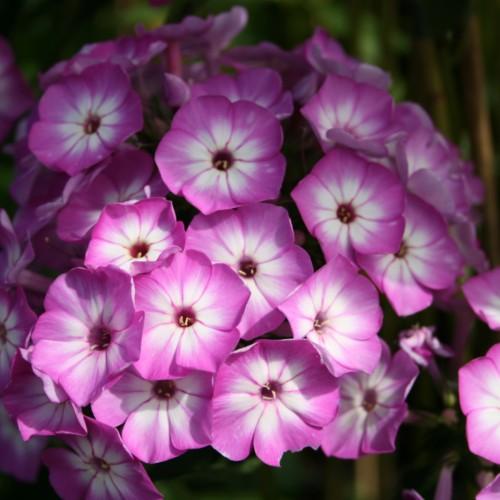
garden phlox
Phlox paniculata 'Bright Eyes'
Also Known As - border phlox,common phlox,common phloxCycle:
Herbaceous Perennial
Watering:
Average
Hardiness Zone:
4 - 8
Flowers:
Flowers In Summer
Sun:
Full sun, Part sun/part shade
Soil:
Rocky , gravelly , dry, Well-drained
Fruits:
Fruits In Autumn Ready In Fall
Leaf:
Yes
Growth Rate:
High
Maintenance:
Moderate
Care Level:
Medium
watering
Garden phlox needs to be watered regularly, but deeply, to keep the soil evenly moist. This should usually be done every 4-7 days, depending on the weather and the specific environmental conditions in which the plant is kept. Watering should be done early in the morning, so as to give the plant adequate time for its leaves and flower heads to dry out during the drier, mid-day heat. The best way to water garden phlox is to slowly release the water at the base of the plant over a period of 15-20 minutes until the water has soaked several inches down into the soil. If the soil becomes too dry between waterings, it is best to give the plant a deep soak to thoroughly moisten the soil.
sunlight
Garden phlox (Phlox paniculata 'Bright Eyes') prefers full sun to partial shade. For best results, this plant should be grown in an area that receives at least 6 hours of direct sunlight each day. Early morning sun is ideal, as it will help dry morning dew from the leaves to reduce disease problems. If placed in a partially shaded area, garden phlox may not flower as abundantly as when grown in full sun.
pruning
Garden phlox (Phlox paniculata 'Bright Eyes') should be lightly pruned in early to mid-spring and then again in mid-summer. In the early spring, knock off any damaged or unsightly blooms that are leftover from the previous season. This will help stimulate flowers for the upcoming growing season. In mid-summer, lightly prune the phlox to remove spent flowers and encourage new blooms. Do not prune more than 1/3 of the plant. Trim away any weak stems and cut back any oversized plants if needed. Pruning will help promote bushier plants and stronger flowering due to more available sunlight and better air circulation.
